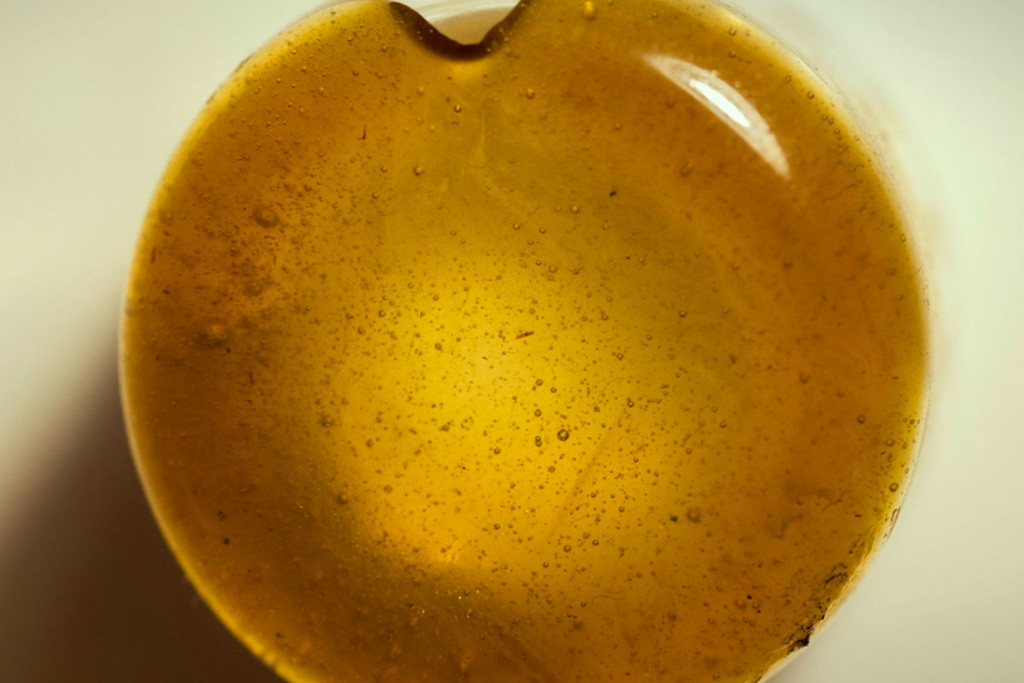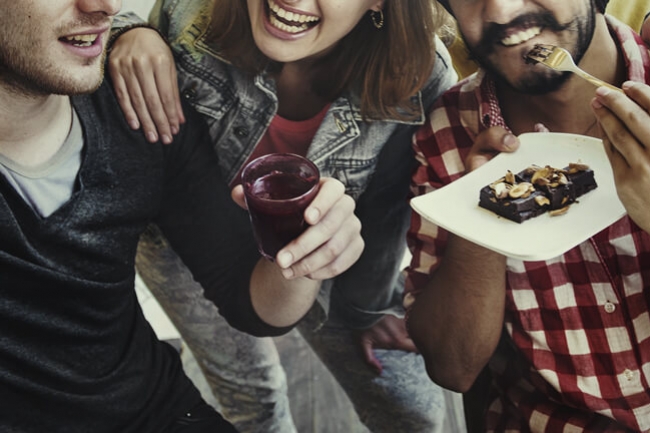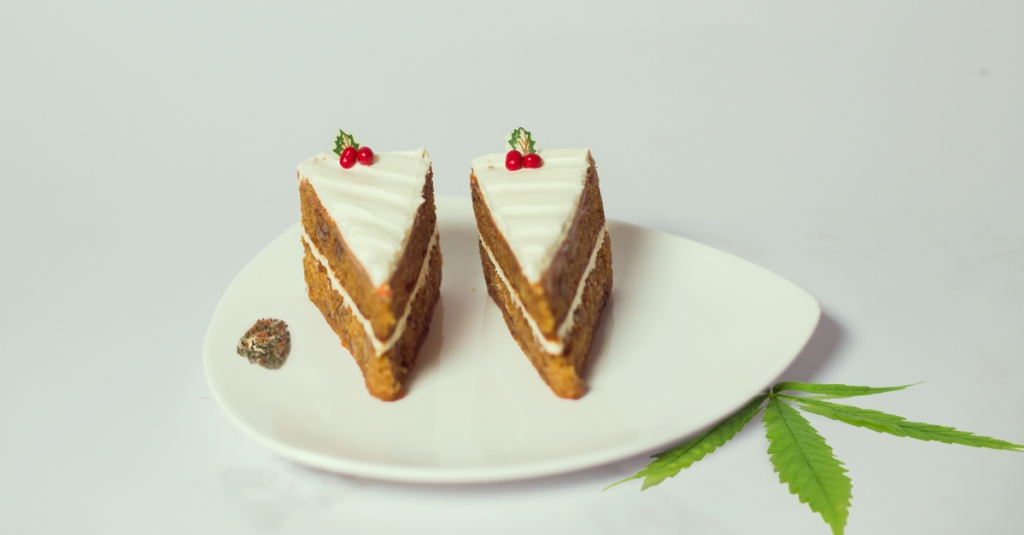.
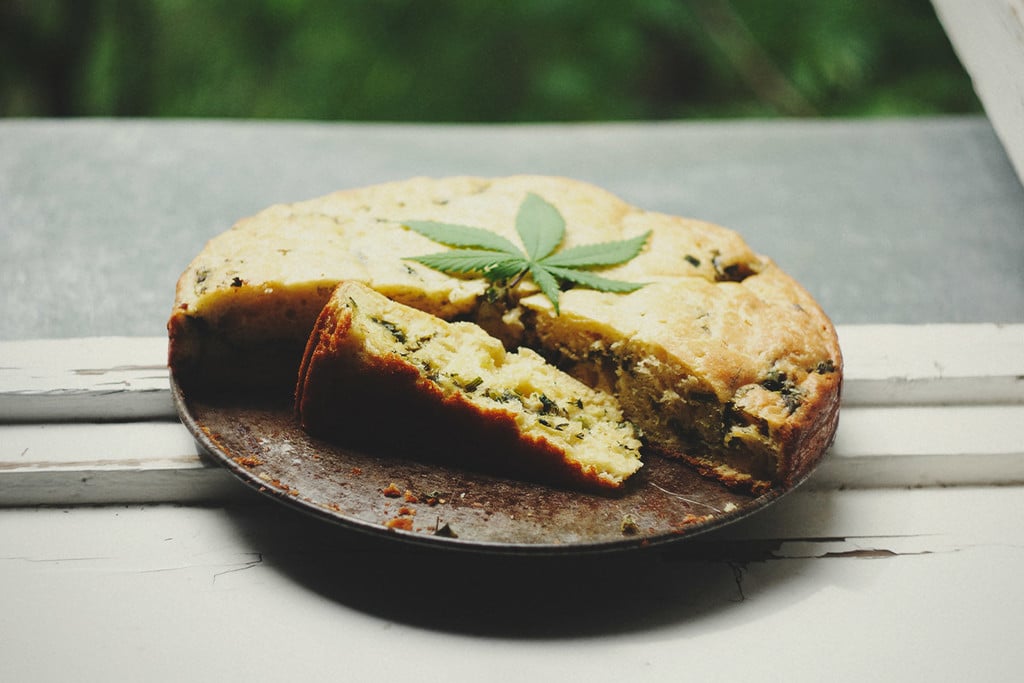
How To Calculate THC Dosage With Cannabis Edibles
Taking cannabis edibles can be a shot in the dark; some people feel nothing at all, and others get incredibly high. So how can you know how much THC is actually in your edibles? With some careful calculations and proper preparation, it is possible to get a good idea of how strong your edibles will be so you can dose accordingly.
Edibles can be a great way to enjoy cannabis. But they need to be approached with extra care. It’s not as simple as eating the same amount that you’d smoke. Maybe you can smoke a half-gram joint and be fine. But if you eat cannabutter infused with half a gram of weed, you might find yourself floored for a very long time.
Working out the strength of THC-infused edibles requires several fairly simple steps. We’ll show you how to calculate THC doses in edibles so you can cook with weed confidently. Making edibles is fun and rewarding, and with a little care, it can be a fantastic way to get high.
Contents:
- General tips for taking cannabis edibles
- Why is it important to calculate edible doses accurately?
- How to determine the potency of edibles
- How to calculate thc doses in edibles
- The difference between thc and cbd in edibles
- Edibles cooking tips for accurate dosing
- Other factors to consider with thc edibles
- The effects of cannabis edibles according to dose
- The art of dosing edibles
General Tips for Taking Cannabis Edibles
Before we look at how to dose THC in edibles, there are a few general tips to cover.
Cannabis edibles can be incredibly powerful and long lasting, and they should be approached with the same caution as psychedelics. Due to the length and strength of the high, if something goes wrong, there’s no turning back.
Are you somewhere you’ll be happy to be incredibly high? Are you with people you don’t mind being a bit weird around? Likewise, pay attention to your mind and mood. If you’re not feeling it, or something is troubling you, wait for a different day.
If all the boxes are ticked and you choose to take edibles, then you’re in for a treat. But don’t get overconfident! Start small and be patient. When digested, THC converts into 11-hydroxy-THC, which is far more potent.
-
How Long Does It Take To Feel the Effects of Weed Edibles?
As you have to digest edibles, it takes significantly longer to feel the effects compared to smoking. Depending on how much (regular food) you’ve eaten, and your physiology, it could take you anywhere between 20 minutes and a couple of hours to come up. The average probably sits between 30 minutes and an hour, though. But if you don’t feel anything after an hour, hold off a little longer!
Once they begin to take effect, it can be another two hours before you reach the peak of the high. So it’s important not to assume that how you feel after 10 minutes is how you’re going to feel for the rest of the experience. Don’t redose until you’re certain you’ve peaked.

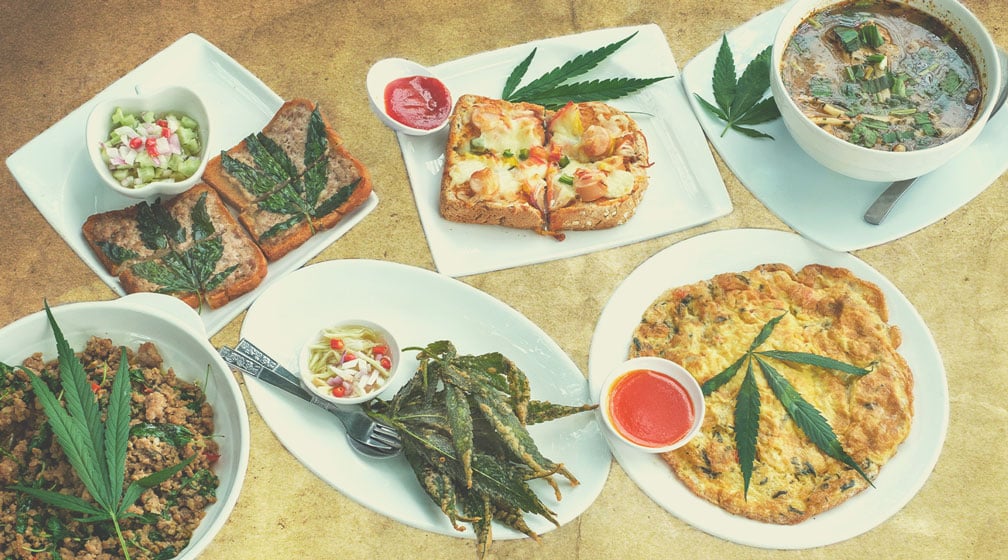
Why Is It Important To Calculate Edible Doses Accurately?
With the potential for experiencing uncomfortable side effects, along with the significant wait time involved, it's crucial to calculate the THC doses in your edibles correctly. Or, failing that, to overestimate.
Don’t assume that just because edibles are made of weed that they can’t be very powerful. If you take too much, you can become severely impaired and highly uncomfortable—and all you’ll be able to do is wait!
How To Determine the Potency of Edibles
With most cannabis products, the strength is measured as a percentage. For instance, look at seeds on the RQS website and you’ll see figures such as 20% THC or 10% CBD. However, when edibles are made from cannabis, the strength is measured in milligrams of THC. This conversion isn’t too complex, but there are several steps involved.
-
Achieving the Desired Effect
As edibles are very potent and much more physical than smoked or vaped THC, the desired effects tend to come at significantly lower doses. Whereas normally many people might enjoy getting very stoned when smoking weed, the equivalent high with edibles is likely to be overwhelming.
Of course, people who smoke more weed will have a higher tolerance for its effects, and as such will probably want to take more than those who never smoke. But if you’re new to edibles, it's probably best to lower your expectations.
How To Calculate THC Doses in Edibles
When calculating how much THC your edibles will contain, there are several factors we must consider.
Calculator results |

The amount of cannabis flowers
to prepare the cannabutter.

The THC concentration of the cannabis flowers.

The CBD concentration of the cannabis flowers.

The starting amount of butter to prepare the cannabutter.

The amount of cannabutter we want to use to cook the recipe.

The number of portions of the final recipe.

The number of portions consumed per person.

The total amount of THC present in the cannabis flowers

The total amount of CBD present in the cannabis flowers

The initial quantity of butter is reduced by evaporation (75 %)

The total amount of THC present in the cannabutter.

The total amount of CBD present in the cannabutter.

The amount of THC present in the cannabutter used in the recipe.

The amount of CBD present in the cannabutter used in the recipe.

The amount of THC present in each portion.

The amount of CBD present in each portion.

The amount of THC ingested according to the number of portions consumed.

The amount of CBD ingested according to the number of portions consumed.
| Infusion for cannabutter |

The amount of cannabis flowers to prepare the cannabutter.

The THC concentration of the cannabis flowers.

The CBD concentration of the cannabis flowers.

The starting amount of butter to prepare the cannabutter.

The amount of cannabutter we want to use to cook the recipe.

The number of portions of the final recipe.

The number of portions consumed per person.

The total amount of THC present in the cannabis flowers

The total amount of CBD present in the cannabis flowers
cannabutter (g):

The initial quantity of butter is reduced by evaporation (75 %)
(mg) in the cannabutter:

The total amount of THC present in the cannabutter.
(mg) in the cannabutter:

The total amount of CBD present in the cannabutter.
used in the cannabutter:

The amount of THC present in the cannabutter used in the recipe.
used in the cannabutter:

The amount of CBD present in the cannabutter used in the recipe.
per portion:

The amount of THC present in each portion.
(mg) per portion:

The amount of CBD present in each portion.
THC (mg) consumed:

The amount of THC ingested according to the number of portions consumed.
(mg) consumed:

The amount of CBD ingested according to the number of portions consumed.
-
Decarboxylation
Despite the strength of cannabis flowers always being expressed in terms of THC, what’s actually present in the flower is a compound known as THCA. The "A" stands for “acid”. To become THC, it has to go through a process of decarboxylation—essentially heating.
When THCA decarboxylates, some of it is lost in the process. Depending on the efficiency of the process, it is likely that around 75–88% of the original potency will be retained. But to err on the side of caution, let’s assume that we keep 90% of the original strength post-decarboxylation.
To work out how much THC we’ll have after decarboxylation, it’s some fairly simple math. But first, we’ll need to convert the initial percentage into a weight.
We’ll use 3 different strengths as examples, but the math is the same no matter what. We’ll use 10% (likely the lowest THC content you’ll work with), 15%, and 20%.
|
1. Work out the weight of THCA per gram of weed • 10% THC = 100mg THCA per 1000mg of weed |
|
1. Work out the weight of THCA per gram of weed • 10% THC = 100mg THCA per 1000mg of weed |
|
2. Work out your overall amount of THC (let’s say we have 5 grams of weed) • 10% THCA: 100mg × 5 = 500mg THCA |
|
2. Work out your overall amount of THC (let’s say we have 5 grams of weed) • 10% THCA: 100mg × 5 = 500mg THCA |
|
3. Work out how much THC there will be after decarboxylation, with an efficiency of 90% • 500mg THCA × 0.9 = 450mg THC |
|
3. Work out how much THC there will be after decarboxylation, with an efficiency of 90% • 500mg THCA × 0.9 = 450mg THC |
-
Lipid Extraction Efficiency
Even the above information won’t tell us how much THC will be retained in our cannabutter or oil, though. Not all of the cannabinoids present will be extracted—it is not a 100% effective process. In fact, some estimates put overall extraction at as low as 30%. However, others go as high as 60%. In the pursuit of caution and well-being, we’ll work with a figure of 60%.
This means that only 60% of the weight of THC will be available for consumption.
Note: Not all fats are equally suited to extraction. Butter and coconut oil seem to hold the most cannabinoids. Other oils tend to be less efficient.
So, taking the weights of THC in the examples above, this is how you’d work out how much THC your cannabutter or weed oil will have:
|
450mg (from 5 grams of 10% THC weed) × 0.6 (60% extraction) = 270mg • 675mg × 0.6 = 405mg |
|
450mg (from 5 grams of 10% THC weed) × 0.6 (60% extraction) = 270mg • 675mg × 0.6 = 405mg |
How Much THC per Edible?
Now that we’ve figured out how much THC is in our fat, it’s a simple step to work out how much is in the final edible—assuming the THC is evenly spread throughout the weed butter or oil (it probably isn’t, but more on this shortly).
Average doses are somewhere between 2.5mg and 10mg—but ultimately this is up to you.
After ensuring your butter or oil is spread evenly throughout your edible mixture, use the following calculations to divide it up.
With the 5 grams of 10% THC weed, we ended up with butter containing 270mg of THC. So to work out how to divide the edible, divide 270 by your desired strength (in mg).
|
• 270/2.5 = 108 |
|
• 270/2.5 = 108 |
So we can see that if you’re after doses with 2.5mg of THC each, you’ll get 108 servings; for 5mg doses, 54 servings; 10mg doses, 27 servings.
The math is the same for the other cannabis examples too. Let's take the 20% THC example, where we ended up with 540mg of THC:
|
• 540/2.5 = 216 |
|
• 540/2.5 = 216 |
The Difference Between THC and CBD in Edibles
Another reason to go steady with cannabis edibles is that the ratio of THC to CBD will skew dramatically in the favor of THC when converted into edible form.
The bioavailability of CBD is somewhere in the region of 5–10%, whereas THC is at least 96%. If you were using a strain with a 1:1 ratio of THC to CBD, you would end up ingesting around 10 times less CBD than THC. And most strains of cannabis contain at least 10 times less CBD than THC anyway, meaning you’ll likely end up with around 100 times less CBD!
So, although many people use CBD to balance out the effects of THC when smoking or vaping, this is not a reliable method for edibles.
Edibles Cooking Tips for Accurate Dosing
Though the reality is you can never work out an exact dose when making edibles at home, there are some things that will make the calculations more accurate, and therefore result in a better experience:
| Use high-quality butter or coconut oil | Impurities will make extraction less efficient. |
| Mix evenly and well | By stirring a lot, and then stirring a lot more, you create a more even spread throughout the butter and the final mixture, meaning the THC will be more uniformly dispersed. |
| Don’t burn it |
If it gets too hot, cannabinoids will break down and your edibles will be weaker (THC will convert to CBNA/CBN, potentially making you even sleepier). |
| Don’t scoop cannabutter from the top |
As cannabinoids settle, they will sink and spread unevenly throughout the butter, so take a vertical slice, ensuring a more even distribution of cannabinoids. |
| Use a pipette or dropper |
If using oil, consider dropping exact amounts into your mixture or onto food. |
| Measure properly |
Use proper measuring equipment and read it well—don’t be lazy! |
| Divide the final product accurately |
Make sure you are actually cutting your brownies or cake into even sized squares. |
| Test it |
Take a very small amount first, just to gauge it, as there are many points at which an error could occur—you might be surprised. |
| Be patient |
Take a little and see what happens. Wait at least two hours before taking more. |
| Use high-quality butter or coconut oil |
|
Impurities will make extraction less efficient. |
| Mix evenly and well |
|
By stirring a lot, and then stirring a lot more, you create a more even spread throughout the butter and the final mixture, meaning the THC will be more uniformly dispersed. |
| Don’t burn it |
|
If it gets too hot, cannabinoids will break down and your edibles will be weaker (THC will convert to CBNA/CBN, potentially making you even sleepier). |
| Don’t scoop cannabutter from the top |
|
As cannabinoids settle, they will sink and spread unevenly throughout the butter, so take a vertical slice, ensuring a more even distribution of cannabinoids. |
| Use a pipette or dropper |
|
If using oil, consider dropping exact amounts into your mixture or onto food. |
| Measure properly |
|
Use proper measuring equipment and read it well—don’t be lazy! |
| Divide the final product accurately |
|
Make sure you are actually cutting your brownies or cake into even sized squares. |
| Test it |
|
Take a very small amount first, just to gauge it, as there are many points at which an error could occur—you might be surprised. |
| Be patient |
|
Take a little and see what happens. Wait at least two hours before taking more. |
Other Factors To Consider With THC Edibles
The strength of the edible is not the only thing that will affect how high you get. When figuring out dosing, it’s about determining the relationship between the drug and the user. Here are some things to think about:
- THC tolerance: As already stated, a general tolerance to smoking weed will transfer to edibles too, but don’t be arrogant!
- Body weight: In general, bigger people need more drugs, and smaller people need fewer. So, especially if you’re small, start easy and build up.
- Mood: If you’re anxious or don’t want to do it, don’t! Wait for another day.
- Expectations: Think about the kind of experience you actually want once you're high. If you just want to sit around giggling, don’t take loads at first just because it’s funny. That being said, if you want to get incredibly high, dose accordingly, but be careful.
- Food intake: Although you don’t want a full stomach, it’s worth having a good meal earlier in the day before edibles, as this will reduce the intensity slightly.
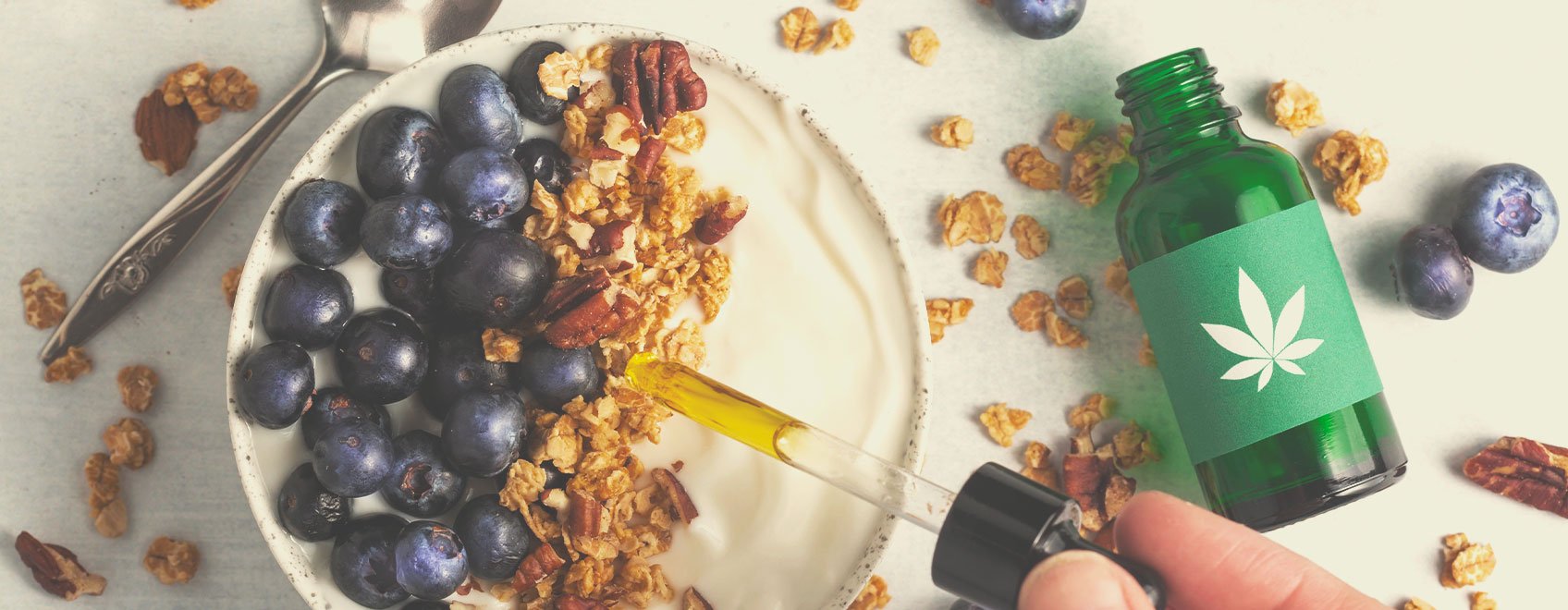

The Effects of Cannabis Edibles According to Dose
We’ve figured out how to determine the amount of THC our butter and subsequent edibles will contain, but how much THC do you actually want to eat? As stated, a standard dose is between 2.5mg and 10mg, but we’ll go into a little more detail.
By determining what strength you want your high to be, it will help you figure out how much edible mixture to make, and how to divide said mixture.
-
Doses for Cannabis Edibles
The amount of THC within edibles can be made very mild or very strong, which is why it’s so important to know how strong they actually are. The doses below can range significantly, and are only general estimates. Every user is different, which is why it is recommended to begin at the low end and gradually work your way up.
- ▶️ Low doses
- A low dose for a beginner is between 1–2.5mg of THC. While this will make a novice user high, it shouldn’t be overwhelming or too debilitating. This is the perfect dose for trying things out and having fun.
- ▶️▶️ Medium doses
- A medium dose falls between 2.5–15mg. The ideal dose will depend partially on tolerance. A medium dose for someone who doesn’t use cannabis often will be around 5mg, whereas a career stoner will fall at the top end. Likewise, factors such as body weight will play a role too.At this strength, you’ll likely notice some impairment and physical relaxation. However, it should mostly be euphoric, fun, and give a sense of heightened perception.Although unlikely, medium doses might cause unpleasant effects in some users, such as paranoia, confusion, uneasiness, and increased heart rate. Expect to be quite tired too!
- ▶️▶️▶️ High doses
- At 15–30mg doses, we’re getting very potent now. Expect a powerful high that will dominate your conscious experience. Perception and coordination will be significantly affected, and you may struggle to move a lot. This is recommended for experienced users only.At this strength, the negative effects mentioned above are much more likely among those without a tolerance.
- ▶️▶️▶️▶️ Extreme doses
- Some people will want to push it even further, taking doses above 30mg. While this is not recommended for most people, and won’t be fun unless you have a very high tolerance, for those who really know what they’re doing, it can induce extreme euphoria. But expect to be almost totally floored, too!At this level, negative consequences become much more likely, and anyone with a sense of unease or discomfort surrounding edibles should not even come close to this dose.
The Art of Dosing Edibles
With a little care, you can get a rough idea of how strong your edibles are. The reality is, if you’re just cooking up a batch in the kitchen, you’re never going to know the exact potency. That’s why, with all of our calculations, we take the highest estimates. And we recommend you do the same. As you can see, the difference between a low, medium, and high dose is minimal when preparing edibles, and therefore getting it wrong is not that hard. So be humble, be careful, and have fun!


































